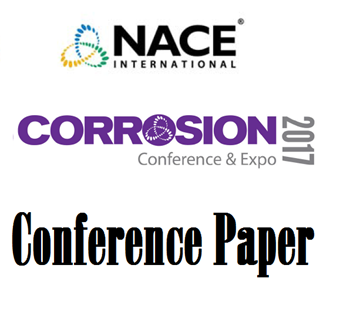Search
NACE Conference Papers
View as
Sort by
Display
per page
A Practical Approach to the Rehabilitation of a Wastewater Treatment Facility: Utilizing Case Histories to Demonstrate “Real-Life” Applications
Product Number:
41212-664-SG
Publication Date:
2012
$20.00
A Prediction and Inspection Technology for Detecting the Corrosion Under Insulation
Product Number:
MPWT19-15162
Publication Date:
2019
$0.00
A Promising Coating of Nanostructured Graphene-Ceria Nanofillers in Polyurethane for Corrosion Protection
Product Number:
51317--9217-SG
ISBN:
9217 2017 CP
Publication Date:
2017
$20.00
A Proposed Mechanistic Approach to Investigate the Susceptibility of Super Martensitic Stainless Steel
Product Number:
51319-12786-SG
Publication Date:
2019
$20.00
A Review Of Fit-For-Purpose Sour Tests Of Low Alloy Steels: Effects Of Buffer Chemistry And Purge Gas Composition
Product Number:
51321-16578-SG
Publication Date:
2021
$20.00
A Review Of Hydrogen Stress Cracking Of Nickel-Based Alloys For Oil And Gas Applications
Product Number:
51321-16705-SG
Publication Date:
2021
$20.00
A Review of Naphthenic Acid Corrosion and Sulfidic Corrosion in Crude Oil Refining Applications
Product Number:
51319-13443-SG
Publication Date:
2019
$20.00
A Review of the Development of 13-17% Cr Stainless Steel Filler Metals and Filler Metal Selection for Restoring 13% Cr Stainless Steel Cladding
Product Number:
51319-12754-SG
Publication Date:
2019
$20.00
A Review of Various Guidelines for Predicting Solid Particle Erosion with Computational Fluid Dynamics Codes
Product Number:
51320-15105-SG
Publication Date:
2020
$20.00
A Review on Residual Stresses in the Fabrication Domain: Evolution Mechanisms, Quantification Techniques and Treatment Methods
Product Number:
MPWT19-14359
Publication Date:
2019
$0.00
A Science-Based Crack Growth Model for Buried Pipelines Undergoing High pH SCC (II) - Application
Product Number:
51314-3617-SG
ISBN:
3617 2014 CP
Publication Date:
2014
$0.00
A Statistical Analysis of the Gamma Exponent Model; a New Methodology for Corrosion Assessment of Localized Metal Loss Flaws and Stress Corrosion Cracking in Oil and Gas Pipelines
Product Number:
51321-16368-SG
Publication Date:
2021
$20.00












